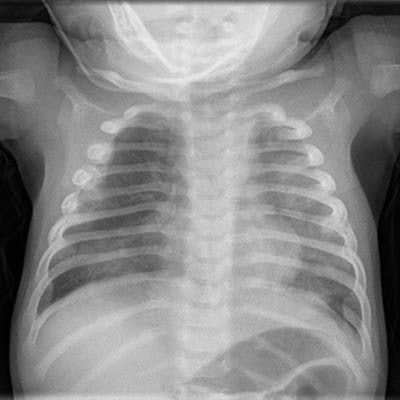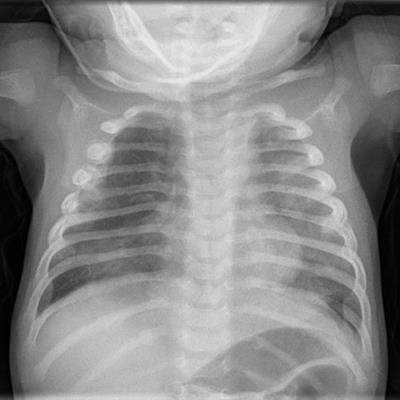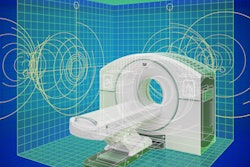
National standards for pediatric imaging are not being met in a large number of centers in the U.K., putting thousands of children at risk, according to a recent audit. A way to solve the problem in the short term is to link up specialists with their colleagues, the researchers added.
The group compared pediatric radiology services across the U.K. with national standards published by the U.K. Department of Health and the Royal College of Radiologists (RCR). The team, led Dr. Kath Halliday from the pediatric radiology department at Queens Medical Center in Nottingham, U.K., found the standards set to deliver quality imaging services for children are largely unmet (Clinical Radiology, 4 August 2016).
Their findings have "demonstrated a widespread shortfall of pediatric radiological and radiographic expertise throughout the U.K., failing to meet published standards and recommendations," study co-author Dr. David Howlett, PhD, a professor at Brighton and Sussex Medical School and consultant radiologist at East Sussex Healthcare National Health Service (NHS) Trust, told AuntMinnieEurope.com.
The problem
Pediatric imaging requires an in-depth knowledge of the developmental abnormalities and diseases distinct to the pediatric population. In addition, the specialty is vital in cases of actual or suspected physical abuse.
"Failure of radiological provision can have disastrous effects, not only for the child, but also their family and the staff and institutions involved in their care," the authors wrote.
 An example of a pediatric chest x-ray. Image courtesy of Dr. David Howlett, PhD.
An example of a pediatric chest x-ray. Image courtesy of Dr. David Howlett, PhD.After a case of child abuse, the former National Imaging Board commissioned a U.K.-wide report in 2010 on behalf of the department of health, titled "Delivering quality imaging services for children," and intended for commissioners. The report advocated a three-tier network for pediatric radiology -- larger hospitals would support smaller ones with training, imaging protocols, and reporting.
By 2012, there were concerns the situation for pediatric radiology had not improved and perhaps had become exacerbated by the increasing shortage of radiologists in the U.K. in general, leading to the current audit by Halliday and colleagues, which took place in the form of a questionnaire.
They derived their audit standards from the U.K. Department of Health document and also the RCR and Royal College of Paediatrics and Child Health documents "Standards for imaging in cases of suspected nonaccidental injury" and "Improving pediatric interventional radiology services," and they were agreed upon jointly by the Clinical Radiology Audit Committee and the British Society of Paediatric Radiology.
The researchers sent out a questionnaire to all hospitals and NHS trusts imaging children 16 years or younger in the U.K. in October 2013. Of the 196 eligible institutions, 87 (44%) submitted data.
They found the following:
- Only 65% of pediatric images were obtained by staff with specific training.
- Only 60% were reported by radiographers or radiologists with appropriate training.
- 62% of centers did not have access to a pediatric opinion 24 hours a day, seven days a week all year.
- Only 34% of radiographers who regularly imaged children had any access to continuing professional development in the 12 months of the audit.
In addition, although all hospitals had facilities for image transfer, only 57% had any formal funding arrangements in place for external reporting of images, the researchers found.
Path to a solution
The results of the audit demonstrate delivering quality imaging for children remains a largely unmet aspiration, the study authors wrote.
In part, this is also due to a lack of radiologists in general. For pediatrics, the large number of vacant posts means there is often no radiologist with specific pediatric training or experience in the smaller hospitals in the U.K.
Also, no postgraduate radiographic qualification is available, the authors noted.
"Free-text comments received, indicating a lack of access to specialist staff and training resources, show that staff are acutely aware of the deficiencies in specialized pediatric imaging input and feel exposed and vulnerable as a result," they added.
A way to solve the dilemma is by establishing pediatric networks -- existing pediatric radiologists within regions would liaise and work together to establish reporting/covering rotas to deal with regional pediatric workload, ensuring specialty access for children, according to Howlett.
"Some investment would be needed to provide administrative resource for rotas and cross-charging, but there are also savings," the authors noted.
For instance, in one hospital in the east of England, pediatric imaging services are provided using a combination of onsite and remote support of two clinical sessions of pediatric training per week. Previously, the general radiologist with an interest in pediatrics had a total of 4.5 sessions attributed to children's imaging.
"Expert input can decrease the number of investigations performed and should reduce the high costs associated with misdiagnoses," the authors wrote. "Currently, the largest barrier to the suggested collaboration is organizational."
The development of formal networks requires input from clinical commissioning groups, clinical reference groups, and multiple trusts. A three-tier radiology model is mandated in the national service specifications for pediatrics, but the findings of this audit show it is not happening, they noted.
"The solutions are not immediate or straightforward and will take close collaboration between doctors and managers to resolve the problems," Howlett added.



















